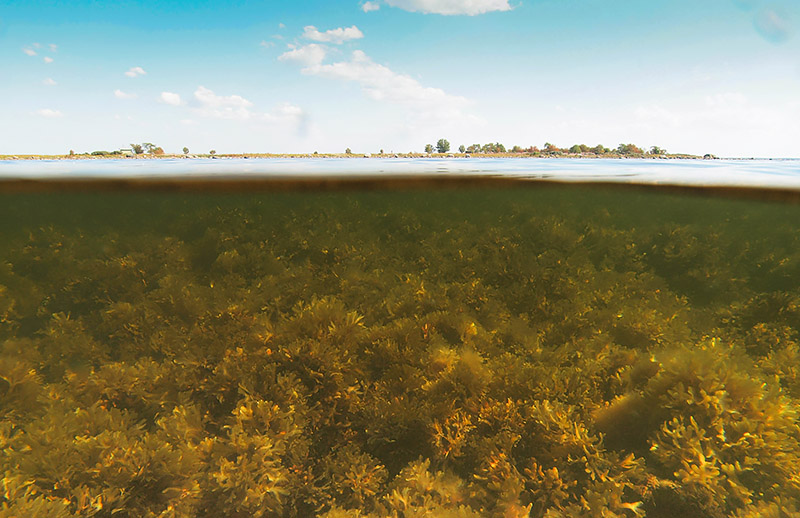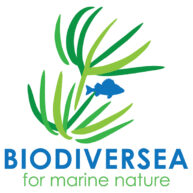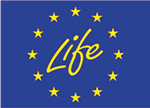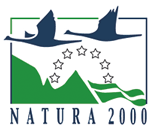Biodiversea LIFE IP — for Marine Nature

Biodiversea LIFE-IP — for Marine Nature
Biodiversea LIFE IP (2021–2029) is the largest collaborative project carried out in Finland to safeguard the biodiversity of the Baltic Sea. The main aim of the project is to enhance the protection of marine nature and promote the sustainable use of natural resources in the marine and coastal areas of Finland.
Did you know that the unique Baltic Sea also impacts your daily life? It produces fish for food, and its seaweeds and marine plants absorb carbon dioxide from the atmosphere. Sea landscape is eye-catching and generates feelings of pleasure. This project concerns you if you have taken a swim or a boat trip or fished in the Baltic Sea or travelled on a cruise ship to Sweden or Estonia.
The marine nature of the Baltic Sea is diverse and rich in species. However, it is facing a wide range of different pressures and the needs of a large number of users must also be met. Thus, to ensure the wellbeing of the marine environment and preservation of species, it is crucial to protect marine areas more effectively and use the natural resources of the Baltic Sea in a sustainable manner.
Developing the network of protected areas
The ambitious goal of the EU’s biodiversity strategy is to protect 30 per cent of Europe’s marine areas by 2030. About 12 per cent of Finland’s marine areas are currently protected and for this reason, the purpose of the Biodiversea project is to determine how this goal can be achieved in the most efficient and in a socially sustainable manner. Based on the data produced in the Finnish Inventory Programme for Underwater Marine Diversity (VELMU), the most diverse and valuable underwater nature sites will be identified and a road map covering the entire coastline drawn up to develop the network of protected areas.
Particularly extensive mappings of areas with protection potential will be carried out in the marine areas around Åland Islands, of which only three per cent are currently protected. The purpose is to collect information on such matters as the geological and biological characteristics of the areas and endangered species occurring in them. Using the information as a basis, we can give priority to the areas with the highest biodiversity when establishing protected areas. In the project, solutions will also be sought to protect privately owned marine areas in cooperation with landowners.
Consideration of natural values and restoration of habitats
Simply increasing the size of the protected areas is not enough to safeguard the biodiversity of the marine environment. For this reason, the project will identify ways to ensure more effective use of the existing network of protected areas, which can be achieved by paying more attention to underwater natural values in the planning of the management and use of the areas. The impacts of climate change and pressures caused by human activity on biota and the preservation of habitats will also be examined so that the effectiveness of conservation can be ensured in the future.
To promote the restoration of habitats of marine species, the project will include a restoration plan covering the entire Finnish coastline. The project will examine which protected areas will benefit the most from the restorations, assess the prerequisites for restoring habitats of Bladder Wrack (Fucus vesiculosus) and Charophytes (Charophyta), examine ways to boost the populations of the critically endangered Grayling (Thymallus thymallus) in the northern Gulf of Bothnia, improve the condition of the bays and lagoons used by many fish species as spawning grounds, and test other new restoration methods.
The project will also promote the preservation of the biodiversity of important habitats both underwater and on land by removing invasive alien species. As part of the project, more effective measures will be taken to hunt Mink (Neovison vison) and Raccoon Dog (Nyctereutes procyonoides), considered as invasive alien predators, in the outer archipelago. In these areas, breeding populations of seabirds have decreased considerably over the past twenty years.
Marine areas can only be protected more effectively if all parties using marine resources for recreation and for living jointly pledge to stop biodiversity loss. For this reason, there will be extensive cooperation in the project between a variety of different actors, and the benefits of the protection of marine nature and the challenges arising from it will be impartially communicated. The measures set out in the project will facilitate the coordination of conservation and the use of marine resources.
Project partners
Metsähallitus, National Parks Finland (project coordinator), Ministry of the Environment, Finnish Environment Institute, Natural Resources Institute Finland, Provincial Government of Åland, Turku University of Applied Sciences, Åbo Akademi University, Geological Survey of Finland, and Baltic Sea Action Group.

More information
Project Manager
Sanni Turunen, sanni.turunen@metsa.fi, tel.int. +358406540386
The project has received funding from the LIFE Programme of the European Union. The material reflects the views by the authors, and the European Commission or the CINEA is not responsible for any use that may be made of the information it contains.
Last updated 4 December 2025


